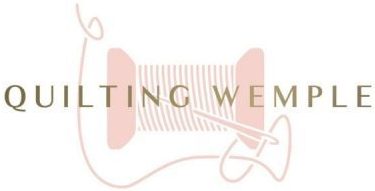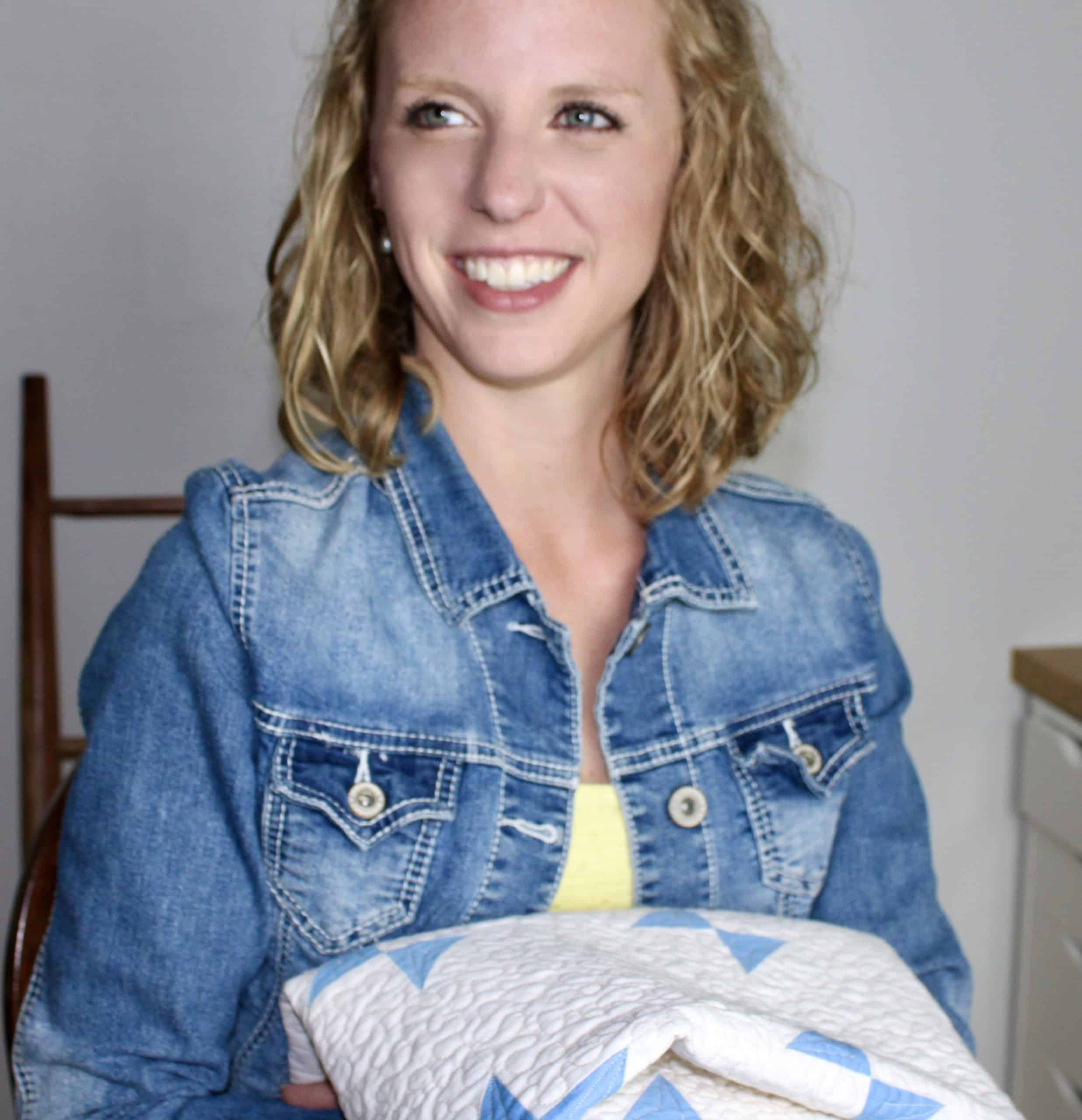
Every quilter has asked it at one point or another. “How do I get that perfect 1/4” seam allowance?”
I don’t know about you, but when I first started quilting this was the least of my concerns.
I thought it was something that the “Type-A” quilters stressed about or the quilter’s that entered into competitions needed to consider for technical points.
So off I go quilting my heart out loosely trying to be consistent with a seam allowance, and not necessarily a 1/4” quilting seam allowance at that.
Then I started designing my freebie quilt specifically to practice technical skills.
Go figure I intentionally tried to go slower developing this quilt and actually practice the skills I claim to have designed it for.
I went out of my way to attempt a perfect 1/4” seam allowance for what was likely the first legitimate time across a full quilt.
And guys, this quilt is going together like a DREAM.
A little thought beforehand and a few hacks and tricks to keep that 1/4″ quilting seam allowance and this has been one of the easiest quilts I’ve put together yet.
I’m sold, and have officially turned a new leaf.
Putting a few helpful things into practice has made getting a more consistent seam allowance super easy and helps immensely when you go to assemble the final quilt top.
So today I wanted to share a few of the tips and tricks I used in my never ending quest for the perfect scant 1/4”.
Use a header scrap

Quilting tutorials everyone on YouTube often show the quilter using a scrap of fabric to start the chain piecing.
But no one ever explains what this is used for.
Turns out, when you go to start sewing a line on your fabric, since there are no current stitches keeping the loose ends of your threads taught, they tend to bunch up on the back of your fabric.
This does two things to your seam allowance, puts more bulk from extra thread in the turn of the seam, and is likely to grab somewhere inside of your machine and actually pull your fabric down into the machine.
Who knew, right?
By using a header scrap, any potential bunching of thread, and pulling of fabric, is mitigated and you start your chain piecing set up for success.
Use a raised guide

This is a fantastic idea that some genius somewhere came up with.
Put a raised guide or wall up on your sewing machine to keep that 1/4” seam without much thought.
You measure out the perfect 1/4” before ever starting to sew and put your wall up.
When you sew your seam, you butt the edge of the fabrics up right to this wall and follow it all the way to the feed dogs.
You are probably thinking the same thing I thought when I first saw this.
Why pay good money for a guide when my sewing plate has marks on it to measure out that seam allowance?
Here’s what I’ve come to learn, you ready for it?
I have a bad habit of sewing over pins.
I know, I know. shh.
Occasionally the needle finds those pins, and then there is a scary THUNK and I pull the pin out bent.
Some times are worse than other times, but every time, it jolts the needle a little more out of line which means my needle is DEFINITELY no longer in a position where that 1/4” on the plate REALLY measures out 1/4”.
Whether you are like me (and I promise I’m working to break that habit) or your sewing machine is just old and the parts just don’t hold as firmly as they used to, your needle will shift locations over time.
Measuring it out and making sure you are actually using a correct reference for a 1/4” will make a huge difference.
There are some easy DIY ways to make a guide like this, and there are some notions you can buy that make it super simple.
I tried a couple of things in my pursuit for the perfect 1/4” and I found that using this guide worked the best for me and will definitely be my go to from now on.
If you are also on the road to finding the perfect 1/4” I definitely recommend giving this guide a try, you can check it out on Amazon here.
Don’t sew over pins

And not only just for the health of your sewing machine.
Pins create more bulk under the sewing foot than your typical 2 layers of fabric that the foot is expecting.
Picture this, you are driving along in your car and reach a speed bump in the road.
What happens when you go over the speed bump?
Unless you hit that speed bump perfectly straight on, which is difficult to do, your car will rock side to side as the wheels unevenly travel over it.
When you sew over a pin, the same thing happens.
The sewing foot rocks side to side, and the seam line follows, screwing up your consistent 1/4” seam allowance.
Additionally, if you are using those pins to keep seams lined up in your blocks, the additional bulk will actually misalign (unalign?) your fabric and you will only get a perfect 1/4” seam allowance on one side of the seam.
When you are sewing over previous seams, you naturally have more bulk already compared to the rest of your seam.
By adding a pin in there, you are forcing the bottom fabric to shift down making the seam allowance on one side perfect, but smaller on the other side.
So use those pins to keep your seams lined up, but once you hit the sewing foot, take the pin out and release the tension of the pin, and you’ll keep that 1/4” seam allowance on both sides.
Cut off tips of triangles before sewing

When I saw this one the first time I had to stop and go, “Huh, I never thought of that”.
When you are sewing two triangles together, the dogear part goes through the needle first, right?
And then the rest of the unit slants down to the left of the sewing foot.
The feed dogs pull fabric right? Well when there is no fabric to pull on the left, and the dogear meets the feed dogs on the right, the right feed dogs twist your triangle the second it hits it.
Because there is no pull on the left side feed dog to counter act it and keep it straight.
Altering that 1/4” seam allowance literally with the first stitch.
Then when the unit goes through the machine far enough to meet fabric at the left feed dog, the unit straightens out and gives you a wavy seam allowance.
You’ll be able to avoid this much easier by actually snipping off the dogear before ever starting the seam line.
By eliminating the excess fabric causing the twist, that will ultimately be removed later anyway, fabric will meet the feed dogs on both sides at the same time, avoiding the twisting and keeping your quilting seam allowance straighter.
Do a test before you start

When putting these tips and tricks into practice it helps to test your seam allowance to understand how off your machine is to start with, especially if the sewing machine plate is your current go to reference.
Once you know how off your needle is, it’ll make seeing the benefit of using some of the tricks a little easier.
Start with three strips of 2” fabric, be sure to cut them as accurately as you would any piece for a quilt.
Sew two of the strips together using your current method for a seam allowance, open it up, and then sew the third strip to either side of the first unit using the same reference.
When you are done, finger press them open and measure against a quilting ruler.
If you have the perfect 1/4” seam allowance, it will measure exactly 5” across the three strips.
If not, use a ruler to measure out a true 1/4″ and try again until you get that perfect 5” square.
If you want a fool proof seam allowance the first time, check out my favorite tool that I use from the picture above.
The needle drops in a small hole right on the 1/4″ line on the ruler giving you the perfect placement for a raised guide every time.
Once you have your 1/4″ measure out, you are officially set up for success to start sewing your quilt pieces!
Time to Practice
Now that you’ve got all my tips and tricks on some of the best ways to keep that perfect quilting seam allowance let’s both start putting this stuff into play for the next quilt!
If you need a project to practice on be sure to check out my free pattern vault for some easy and quick freebie patterns.
And if you thought this post had some good stuff in it and want more be sure to follow me on pinterest to see all my latest and greatest stuff as it gets released.









0 Comments